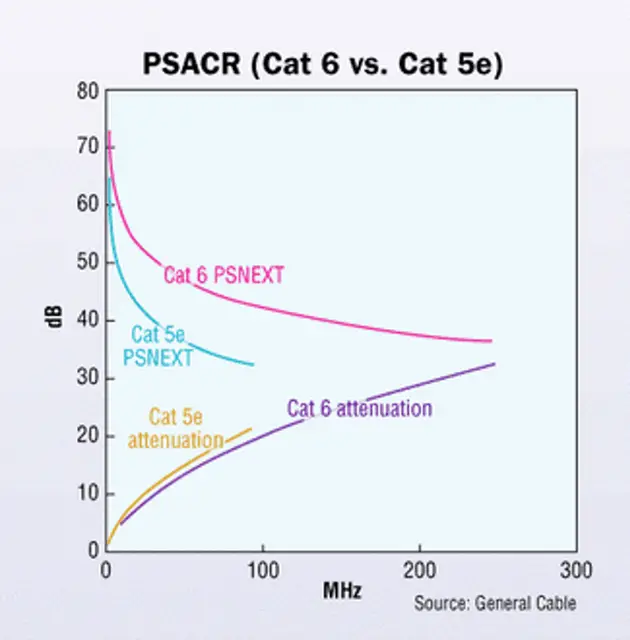Definition of Attenuation to Crosstalk Ratio (ACR) in Network Encyclopedia.
What is Attenuation to Crosstalk Ratio (ACR)?
ACR stands for Attenuation to Crosstalk Ratio is the ratio of the received strength of a signal on a pair of wires to the amount of crosstalk between the wires.

The higher the attenuation to crosstalk ratio (ACR) for a given cable, the less chance of signal errors. ACR is calculated as the difference between the attenuation value and the near-end crosstalk value at a specific frequency.
This is because both attenuation and crosstalk are usually expressed in units of decibels for cabling media. The decibel scale is logarithmic in nature, which means that a difference in decibel values corresponds to a ratio of actual signal voltage or power levels.
For copper category 5 cabling, the ACR value is typically about 10 dB, at a frequency up to about 100 MHz. This value decreases slightly with increasing frequency until crosstalk and attenuation values converge, at which point transmission becomes error prone and the cabling ineffective for communication.
The ratio of the received strength of a signal on a pair of wires to the amount of crosstalk between the wires.
The higher the attenuation to crosstalk ratio (ACR) for a given cable, the less chance of signal errors. ACR is calculated as the difference between the attenuation value and the near-end crosstalk value at a specific frequency.
This is because both attenuation and crosstalk are usually expressed in units of decibels for cabling media. The decibel scale is logarithmic in nature, which means that a difference in decibel values corresponds to a ratio of actual signal voltage or power levels.
What does it mean?
Positive ACR calculations mean that transmitted signal strength is stronger than that of near-end crosstalk. ACR can be used to define a signal bandwidth (e.g. 250 MHz for category 6 cable) where signal to noise ratios are sufficient to support certain applications. The maximum frequency for which positive ACR is assured provides a benchmark to assess the usable bandwidth of twisted-pair cabling systems. EIA/TIA specifies specific values for ACR in order to meet the various categories of cable.